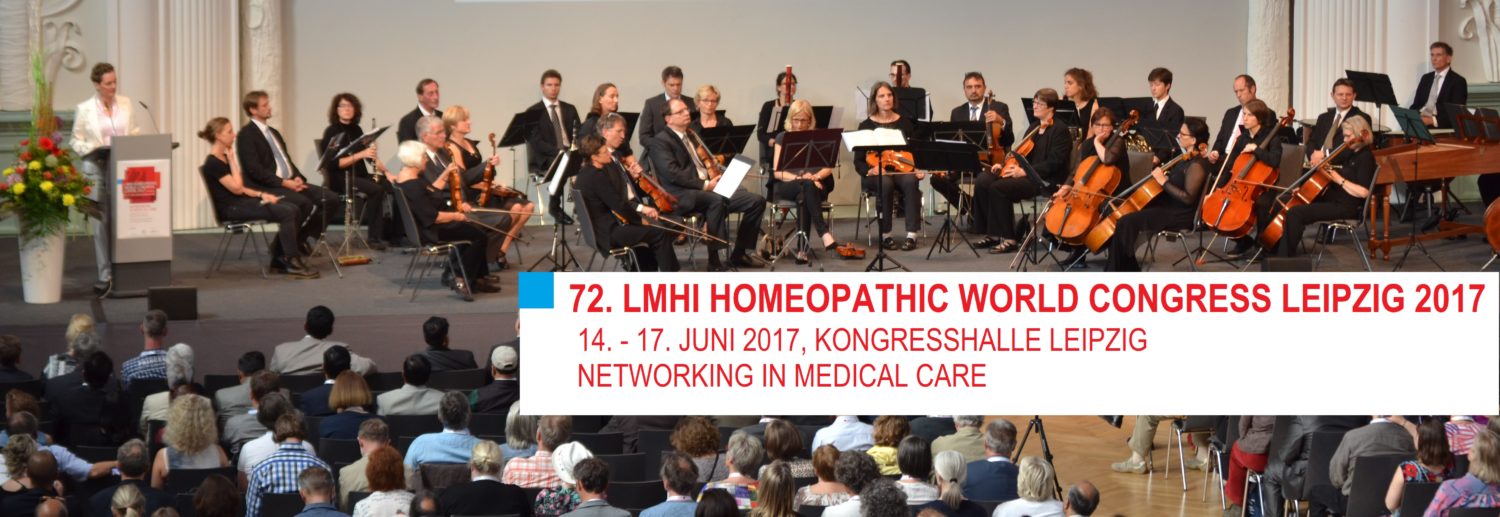Which role does homeopathy play in the project “Integrative Pediatrics” at three children’s hospitals in Germany?
Background:
Since 1995 single-remedy-homeopathy is being integrated at the Dr. von Hauner’s Children’s University Hospital in Munich, one of the most famous pediatric hospitals in Germany. Integration means patient care, education and research. We treat both outpatients and inpatients homeopathically in addition to conventional therapy. Consultations have continually increased during the last 20 years and are now requested from all wards and departments of the hospital, all together 1000 patients per year.
Methods:
In 2015 the project “Integrative Pediatrics”, sponsored by the Carstens-Foundation in Essen, was initiated in three childen’s hospitals: Munich (University), Landshut and Essen. Integrative Medicine combines the best of conventional medicine plus evidence based complementary medicine plus mind-body-medicine. One primary aim is to define which methods are suitable for children regarding two main criteria: effectiveness and safety.
Results:
Homeopathy has shown to fulfill these two criteria: effectiveness and safety extremely well. It is the most frequently demanded complementary method in Germany, and especially for children. A survey at the Children’s Hospital in Landshut reveals the fact that 80% of the parents wish their child to be treated complementarily with homeopathy.
Conclusion:
In the project “Integrative Pediatrics” homeopathy plays an important role, because it is a safe and effective method without severe side effects.
Keywords: Integrative pediatrics, homeopathy, complementary medicine
Homeopathy in children with Prader-Willi-Syndrome, a genetic disease
Background:
Single-remedy-homeopathy according to the Vienna School of Homeopathy (Mathias Dorcsi) is well accepted as a complementary method at the Dr. von Hauner’s Children’s University Hospital in Munich. Collaboration takes place in various disciplines of the Hospital, such as neonatology, oncology and neurology.
Based on positive results in retarded children, we chose Prader-Willi-Syndrome to perform an observational study. This syndrome is a genetic disorder because of a microdeletion at the gene 15. It is characterized by the triad of dwarfism, obesity and oligophrenia.
Methods:
We performed an observational study with 20 children, aged from 7 months to 16 years. According to the age, the main problems among others were developmental retardation and muscular hypotonia. IInsufficient drinking in the first weeks of life is later displaced by craving for food, obesity, retarded motoric and mental development, further behavioral disorders like fit of rage, obstinacy and slowness in moving and thinking. Therefore classification took place according to age groups as follows: 7 months –3 years, 8– 12 years, 13 – 16 years. We used questionnaires at the beginning of the homeopathic therapy, then later after 3, 6 and 12 months to document the reactions to therapy.
Results:
Prader-Willi-Syndrome is not as homogenous as described in the literature. With homeopathic therapy the conditions of 17 of 20 children improved in various aspects. The best results were seen after calcium carbonicum in high potency, followed by Q-potencies over a longer period.
Conclusion:
Single-remedy-homeopathy, based on the individual child shows good results in children with Prader-Willi-Syndrome, an example of a genetic disease.
Dieser Post ist auch verfügbar auf: German
